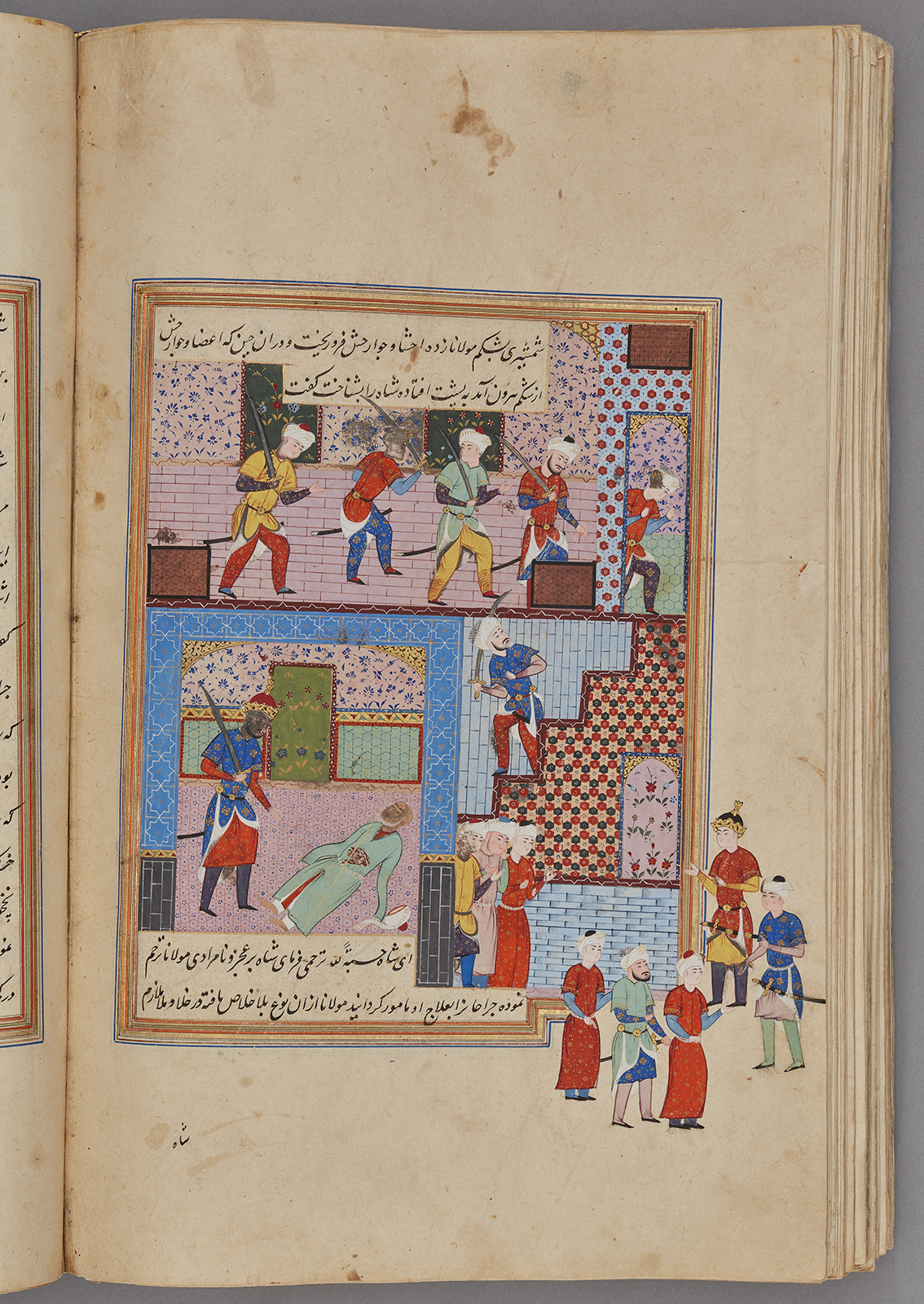Click on the image to zoom
Attack of the sons of Mubariz al-Din on their father, Folio from a manuscript of Nigaristan
- Accession Number:AKM272.f252v
- Creator:Author: Ahmad b. Muhammad Ghaffari, Persian, died 1567 Scribe: Ahmad al-Shirazi
- Place:Iran, Shiraz (probably)
- Dimensions:38.7 cm × 25 cm × 6.4 cm
- Date:1573-74 CE/980 AH/AH 980
- Materials and Technique:Ink, opaque watercolour, and gold on paper
The miniature painting "Attack of the sons of Mubariz al-Din on their father" is from an intact manuscript of Kitab-i Nigaristan, a collection of anecdotes and historical incidents written in prose by the historian and scholar Ahmad Muhammad Ghaffari (1504–1567/68) of Kashan in 1551–2. This illustrated manuscript, dated 1573, was probably produced in a Shiraz workshop.
See AKM272 for more information about the manuscript and links to the other illustrations.
Further Reading
The illustration shows actions taking place simultaneously in three rooms. Two princes invade the palace of their father, King Mubariz al-Din (1314–63).[1] While one son finds his father and ties him up (and, in the process, slashes the stomach of a poet who did not recognize him immediately), his brother watches outside the door. This other brother can be recognized in the painting as a crowned figure. Five figures are depicted beyond the pictorial frame as if they somehow embody the uncontrollable violence taking place within the palace.
To convey this complicated scenario, the picture is divided horizontally into two levels and vertically divided into four levels. The surface of the image is divided in the middle and each floor is illustrated in one half. The upper floor in the upper half of the image itself consists of an interior and exterior view of the room. The lower half of the picture is in turn divided into a staircase and an interior. Both the upper and lower interiors consist of a back wall, which is decorated with murals and tiled surfaces. The main room at the bottom left is framed with a frieze-like tiling. These merge into a patterned stone base at the bottom.
Though it is particularly complex, this painting follows conventions of interior scenes[2] in many other miniature paintings (including those in the Nigaristan). It depicts both the interior of a room and the façade of that room. It also situates a main room between two text boxes. The side scene is mostly the façade of the same room.
- Elika Palenzona-Djalili
Notes
1. Muḥammad ibn Muẓaffar Šaraf al-Din Mubariz al-Din was the first ruler of the local dynasty of Muzaffarid, which came to power in Kirman, Fars, and the province of Arak, ʿIraq-i ʿAǧam.
2. For more information on court scenes, see: Eleanor Sims, Peerless Images.
References
Sims, Eleanor. Peerless Images: Persian Painting and Its Sources. New Haven and London: Yale University Press, 2002. ISBN: 9780300090383
Note: This online resource is reviewed and updated on an ongoing basis. We are committed to improving this information and will revise and update knowledge about this object as it becomes available.


